
Exhibition:
Chris Burden: Extreme Measures
The New Museum, New York
October 2, 2013–January 12, 2014
Catalogue:
Chris Burden: Extreme Measures
Edited by Lisa Phillips and Massimiliano Gioni
New York: New Museum and Skira Rizzoli, 2013.
248 pp.
Cloth $75.00
ISBN: 9780847841790
This exhibition is the first New York survey of the work of Los Angeles–based artist Chris Burden, and his first in the United States in twenty-five years. The pieces on view span his more than forty-year career, from videos of early conceptual performances to sculptures created in recent months.
Burden has always been fascinated by extremes, breaking points, physical threats, and endurance, and their instantiation in military hardware. In the 1980s, he pursued this theme in tableaux evoking the miniature worlds of models and toys. All the Submarines of the United States of America (1987) comprises 625 cardboard models of the U.S. submarine fleet suspended as though cruising in one direction while submerged at various depths. Even after the end of the Cold War, submarines remain the most potent and least noticed instruments of aggression. Not only can some launch nuclear missiles, they are scarcely combatable in conventional warfare, as was demonstrated by the sinking of the Argentine cruiser General Belgrano by the British submarine Conqueror in 1982, with the loss of 323 lives.Burden is clearly captivated by the machinery of war. His enormous 1981 installation A Tale of Two Cities (Orange County Museum of Art, Newport Beach) is a child’s fantasy turned adult nightmare. Over five thousand toys are distributed over a sand-based landscape depicting the attack by the forces of one city on the defenses of another. The toy armaments and combatants vary in scale and vintage. I recognized some from my 1960s childhood, while others—fantasy monsters and science fiction vehicles—are the kind with which my son might have played. This is a hobbyist’s landscape, such as one might encounter at a model railroad exhibit, gone dangerously wild, exposing the sinister underbelly of play.
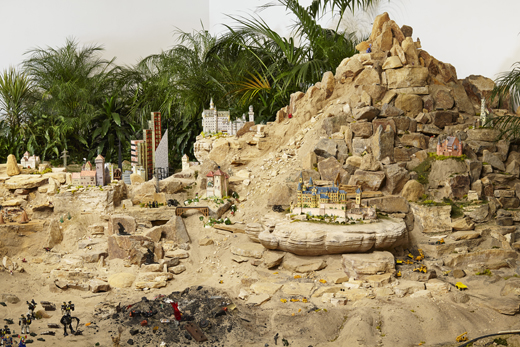
Burden’s recent work, Pair of Namur Mortars (2013), also addresses warfare. This is the work I wish to consider in detail. Each is a life-size replica of an eighteen-and-a-half-inch mortar in the Tower of London. Both the original and the replicas weigh some three and a half tons. The original was cast in 1692 and was reputedly used to fire five-hundred-pound balls at the siege of Namur in the Spanish Netherlands by English, Scottish, and Dutch forces during the War of the League of Augsburg in 1695. A label attributed to Burden states: “The reproduction mortar has been fabricated as a set of two and is fully functioning and able to fire a cannonball.” Burden’s statement is erroneous. There is no functioning touchhole, either because the mortars have been cast without or because the casts reproduce damage to the pan. Why claim that the mortars are “fully functioning” when clearly they are not? Is this an attempt to enhance their evocation of massive destructive power? Or is this assertion based on the assumption that what an artist claims in the context of art must be so? Is the suggestion that Pair of Namur Mortars is artillery ancillary to the claim implied by their exhibition that Pair of Namur Mortarsis art? And in precisely what sense might Pair of Namur Mortars be art?
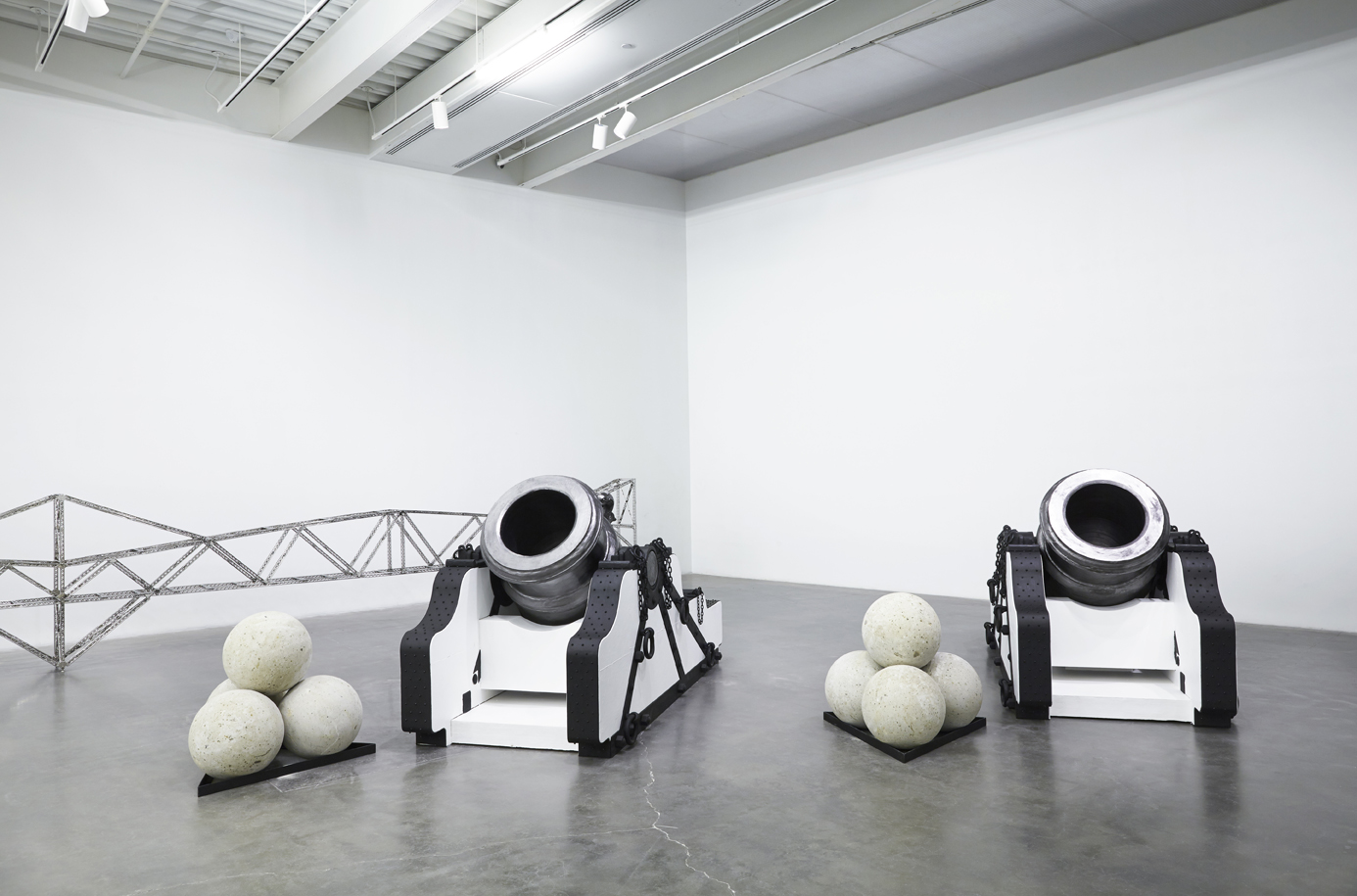
We might begin by asking where the artistry in the creation of these impressive things might lie. In the first place, is it with Burden, who ordered them, or is it with their fabricators? This is an old puzzle. Artists are usually eager to claim all credit on the grounds that the art consists in the concept rather than in the execution. We may readily concede this in cases in which the artist defines the form—steel sculptures by Richard Serra, for instance—but a case such as this, in which the artist acknowledges each constituent to be an “accurate reproduction,” is more problematic. There is an important difference between the character of, say, Serra’s Torqued Ellipses of 1996–97 (Dia Art Foundation, Beacon, New York) as an artist’s invention, and Pair of Namur Mortars as an artist’s appropriation and designation. Any credit for the form of Pair of Namur Mortars is due to others, including the original seventeenth-century designer, and the person who commissioned the prototype, Sir Henry Goodricke (1642–1705), Lieutenant-General of the Ordnance, named in the inscription on the breech. We might also want to give some credit to the founders who physically created the barrel of the original mortar, as well as those of the reproductions. Web sleuthing reveals that the reproductions were made by the bell founders John Taylor & Co. of Loughborough, England, in 2013. Yet these skilled craftspeople receive no acknowledgment.
Where else might the artistry in a Pair of Namur Mortars lie? Burden contributed three characteristics that differ from the prototype. First, rather than reproducing the mortar as a single artifact, he had two reproductions made to form a pair. Second, he added two piles of projectiles, each made up of four massive stone balls, beside the mortars. Third, unlike the prototype, the barrels, breeches, and trunnions of the reproductions are unpatinated. They exhibit the lustrous sheen of new alloy, so different from the aged, darkened look of the prototype. They seem to cheat the passage of time we associate with the original mortar. Fourth, we might draw a particular inference from their pristine condition, for it encourages their possible association with reenactments. We might readily imagine them to be gigantic abstractions from among the varied weapons in Burden’s A Tale of Two Cities. That is, we could imagine these mortars playing a role in a battle or, at least, in a reenactment or a model representation of a battle. Their association with the siege of Namur prompts us to detect an allusion. Whether Burden intends this or not, they evoke a specific, albeit fictional, series of model reenactments. In The Life and Opinions of Tristram Shandy, Gentleman (1759–67), Laurence Sterne’s Uncle Toby, assisted by Corporal Trim, contrives elaborate outdoor model reenactments of the siege of Namur, the battle in which Uncle Toby had been wounded in the groin. Even if Burden is not identifying with Sterne’s character by purposefully drawing a parallel between Uncle Toby’s eccentricity and his own obsession with military materiel, his choices create the allusion.
These four factors alone—doubling the prototype, the addition of projectiles, the pristine character of the metal, and the amenability of the mortars to association with Sterne’s novel—may contribute sufficient inventive novelty to the Pair of Namur Mortars to allow them consensual recognition as artworks. Yet surely the act of appropriation and designation that brought the Pair of Namur Mortars into existence dominates any cognitive apprehension of them. This is an act different in kind from Serra’s invention of the Torqued Ellipses. Appropriation and designation to create ostensible artworks has many precedents in twentieth- and twenty-first-century art practice, but it prompts the question: Are acts of appropriation and of invention equally members of a family of acts that result in artworks? Are they acts of the same kind?
First, what kind of material object has Burden reproduced, appropriated, and designated? The prototype of Pair of Namur Mortars may be a weapon of war, but it can also have a life as a work of decorative art. It would seem, though, that the claim that Burden’s reproductions constitute an artwork is not dependent on any decorative art status its prototype may have. Many appropriations presented as artworks do not depend on their prototypes being artworks, nor do reproductions of those appropriated objects that are themselves presented as artworks, an example being the editions of reproductions of Marcel Duchamp’s readymades produced by his dealer, Arturo Schwartz, in 1964. For instance, no snow shovel (the prototype—lost—for replicas of Duchamp’s 1915 work In Advance of the Broken Arm) serves as a work of decorative art.
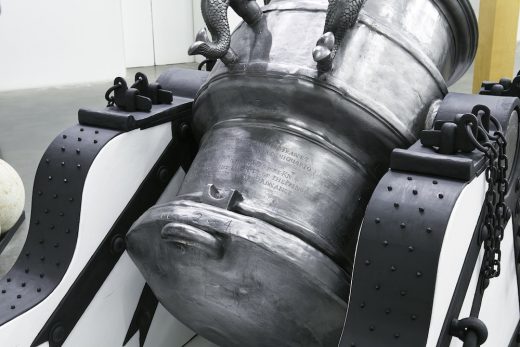
At this point it is worth considering the two terms I have used thus far to describe near-identical repetitions of prototypes: replicas and reproductions. A replica implies the active involvement of the creator of the prototype in its repetition, and also that the prototype is the result of the creator’s invention. Replicas generally, though not invariably, are made of the same materials as their prototypes. A reproduction implies no such closeness: anyone can copy a prototype to create a reproduction; its maker can, though need not, use materials different from those employed in the prototype; and the term implies a certain distance from original creative invention. Burden explicitly and properly calls the objects that constitute Pair of Namur Mortars “reproductions,” yet the New Museum (and, by implication, Burden himself) exhibits them as an original artwork. They would appear to be presented as such solely because they instantiate Burden’s appropriative choice as an act of designation. Pair of Namur Mortars therefore raises afresh the question, does the artist have a free hand to designate anything, including a reproduction, an artwork? To adapt a remark attributed to Kurt Schwitters: Is everything an artist spits art?—and not only spits, we infer from the cans labeled Merda d’artista produced by Piero Manzoni in 1961, each allegedly containing his feces. The preponderance of opinion in the art world is that such artists—Duchamp, Schwitters, Manzoni, and many others—have successfully made their case. Manzoni’s wit in offering each of his cans for a sum tying the price of his excrement to that of gold (long since exceeded in the secondary market) has surely helped their cause. Yet Burden’s new piece prompts us to ask again whether the claim really survives scrutiny. On what grounds, precisely, might Pair of Namur Mortars be an artwork?
To try to understand the issues involved, we can turn to an analogous but rather more explicit case of appropriation and designation in 1973 by Michael Craig-Martin. An Oak Tree (National Gallery of Australia, Canberra) consists of a glass shelf on metal brackets set on a wall at a height of just over eight feet. On it stands a glass tumbler of water. The shelf is accompanied by a text, originally a handout but now affixed to the same wall. In it, Craig-Martin writes of having changed “a glass of water into a full-grown oak tree without altering the accidents of the glass of water,” claiming that “the actual oak tree is physically present but in the form of the glass of water.” This is not so peremptory and arbitrary—or delusional—as at first it might appear. Craig-Martin might be thought to have created if not an artwork, then an experiment in cognitive psychology, or an instantiation of a thought experiment akin to those in analytical philosophy.
The purpose of this work considered as a thought experiment is to isolate what Craig-Martin terms the “single and essential element” of an artwork, which he identifies as “belief that is the confident faith of the artist in his capacity to speak and the willing faith of the viewer in accepting what he has to say.” In other words, An Oak Tree is a 1970s conceptual art version of Schwitters’s 1930s pronouncement: both assert the stipulative, transformative capacity inherent in the office of the artist; but Craig-Martin reveals a further factor not mentioned by Duchamp, Schwitters, or Manzoni: “the willing faith of the viewer in accepting what he [the artist] has to say.” That is, Craig-Martin acknowledges that the power inherent in the office of the artist, while necessary, is not sufficient to transform a shelf bearing a glass of water eight feet off the ground into a full-grown oak tree. However, on whether that power inherent in the office of the artist is sufficient to transform a shelf bearing a glass of water eight feet off the ground thus successfully designated a full-grown oak tree into an artwork, Craig-Martin is silent. The implication of presenting his notion as an artwork, rather than as an experiment in cognitive psychology or as a philosophical thought experiment, is that the stipulative power inherent in the office of the artist is sufficient for this purpose, even if it is not sufficient—as he explicitly recognizes—to transform the glass of water on the shelf into an oak tree. For that quite distinct transformation, he admits to requiring “the willing faith of the viewer.” But does he not equally require “the willing faith of the viewer” to transform the glass of water ensemble into an artwork? At issue are two distinct transformations, and on Craig-Martin’s own account their causal conditions differ. Is he correct? The status of many works of appropriation and designation, including both An Oak Tree and Burden’s Pair of Namur Mortars, depends on the answer.
To present these things as artworks, Craig-Martin, Burden, and other artists who work similarly, rely on arguing from authority. They assume that certain powers and abilities inhere in certain offices. We are talking here not of certain powers of execution—of an officer in the armed forces to issue a legitimate order to a subordinate, for instance—but of powers of judgment. Here, humans seem generally disposed to defer to recognized expertise they associate with a wide range of offices individually. Depending on the society to which they belong, sick persons may defer to the expertise of a shaman or a physician. Yet there is invariably a limit to the deference any expert can command. Trust in expertise has its limits. Ineffectual shamans are exiled; inept physicians are sued. No one expert has the final word. This is so even in fields that depend entirely on independent judgment, such as fine art connoisseurship aimed at establishing the authorship of insecurely identified artworks. The most we can say of such attributions, however confidently asserted on the basis of individual experience and accrued authority, is that they are provisional. Judgment in these realms is always open to challenge using evidence beyond personal expertise. The painting confidently attributed by an expert to a seventeenth-century artist cannot be by that artist if subsequent analysis of its constituents reveals the integral use of pigments such as Prussian blue that were unavailable until the eighteenth century. Arguments from authority alone (“It is so because I say it is so”) are inherently vulnerable, and always subject either to independent confirmation—hence diminution—or to refutation when other evidence is adduced.
Arguments from authority are also vulnerable when fields of expertise overlap and lead to contradictions. For instance, the authority of the artist and that of the botanist rarely overlap and contradict each other. There are plenty of instances of artists using botanical items in their work, but they rarely give rise to contradictory definitions. Any botanist would presumably concur in judging the oak trees in the citywide installation in Kassel, Germany, by Joseph Beuys, 7000 Oaks—City Forestation Instead of City Administration (1982–87) to be oak trees. Whether or how Beuys’s work might constitute an artwork may very well be open to question, but not the identity of its living botanical constituents. However, the botanist, speaking as a botanist, who declares a glass of water on a shelf to be an oak tree is likely to arouse suspicions regarding that individual’s sanity. This case suggests that the old adage “Cobbler, stick to thy last”—to each expert his or her own field of expertise—might serve to undergird the authority of the artist to define what is art. But artists are not alone in exercising this authority. Philosophers do, too. And let us remember that we have seen Michael Craig-Martin come close to conducting what might be taken for an analytical thought experiment with his Oak Tree.
Rather than employ actual names and specific instances, let us drain the case of preconceptions by using ostensibly neutral terms. X is an artist whose office is to make and designate things as art. X declares a thing, p, to be art. In doing so, X appeals to the authority of the office of artist. Y is a philosopher whose office is to define concepts and to judge whether an object conforms to a given concept as its token. Y declares p not to be art. In doing so, Y appeals to the authority of the office of philosopher. The claims regarding the ontological status of p made respectively by X and Y are irreconcilably contradictory: pcannot be both art and nonart simultaneously. It is clear that an argument from authority is not sufficient to sustain either claim. A thing cannot be art solely because an artist says it is, just as a thing cannot not be art solely because a philosopher says so. Both must adduce further reasons if there is to be a persuasive decision as to whether p is art or not.
These considerations concern the ontology of art. In practice, we may not need to worry about definitions at this level. If, on the earlier case, we can justifiably treat a given thing as art provisionally—that is, until on external grounds or in the light of more refined expert judgment that thing is shown not to be art—on this case we might recognize that a thing not used as art in one circumstance—a pair of reproductions of a seventeenth-century mortar, for instance—might well be used as art in another. To use a thing as art is not to make it art; but, in practice, use is the key criterion of distinction. To achieve and sustain such use, though, the authority of the artist is not sufficient. Rather, that use requires a viable community to sustain it. That community must exhibit what Craig-Martin recognized as “the willing faith of the viewer” necessary for the glass of water ensemble to function as an oak tree. Burden’s Pair of Namur Mortars similarly requires “the willing faith of the viewer”—indeed, of a viable community of viewers—to function as an artwork. Such a community may exist, comprising members of the art world. Yet not all its members will share “willing faith” in all instances, especially in cases of appropriation and designation. In other words, for a thing to function as art—if not to be an artwork—the action of a community is necessary, not the authority of an artist. The artist can be a key motivating member of that community, but no artist can compel “willing faith.” The ontological barrier is higher yet: neither the stipulation of an artist nor the willing faith of a community of viewers can make a thing an artwork.
That this is so can be demonstrated by an example. The composer Karlheinz Stockhausen, and the artist Damien Hirst, among other artists, variously described or alluded to the terrorist attack on the World Trade Center in New York on September 11, 2001, as an artwork, or in terms of art. Their remarks may have been taken out of context, and their intention may have been to pinpoint a particular creativity in these acts—however heinous—by analogy with art, but to most people these remarks seem imprudent, distasteful, and offensive. No artist can extend the kind that is art as a matter of use, however open it may be, to include anything in the face of the absence of the “willing faith” of a viable community. No artist has succeeded in designating a murderous terrorist attack an artwork.
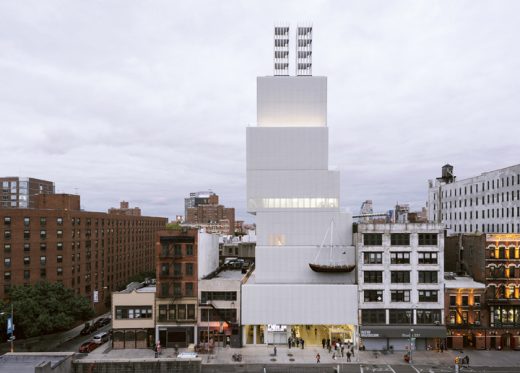
Burden’s Pair of Namur Mortars, while addressing human violence and its means, strikes me as neither imprudent, distasteful, nor offensive. Rather, I find it engaging. While not necessarily either artillery or an artwork, it can function as an artwork—if not as artillery—while on display in the New Museum, and conceivably on other occasions, too. The distinction between being an artwork and functioning as an artwork may seem trivial and of no practical value. On the contrary, to acknowledge this difference diminishes the authority that many artists claim, and to which many others in the art world accede. Artists can protest all they like that what they make, designate, or appropriate is art, but, as Ira Gershwin put it, it ain’t necessarily so. The artist is but one of the participants in what Ludwig Wittgenstein might have called an art game. Just as there is no such thing as a private language, no artist—even one of the stature of Chris Burden—can play the art game alone. No artist has, nor has ever had, that authority. Because no one really knows what art actually is, not everything artists spit, shit, appropriate, or designate need be art; though, if we care to, the rest of us can agree with them to use it as art—even if only for a time.
Ivan Gaskell is professor, curator, and head of the Focus Project at the Bard Graduate Center in New York City.
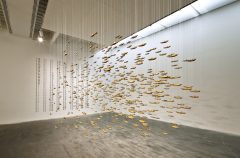
Chris Burden, All the Submarines of the United States of America, 1987. 625 miniature cardboard submarines, 96 x 240 x 144 in (243.8 x 609 x 365.2 cm). Dallas Museum of Art purchase with funds donated by the Jolesch Acquisition Fund, The 500 Inc., the National Endowment for the Arts, Bradbury Dyer, III, Mr. and Mrs. Bryant M. Hanley, Jr., Mr. and Mrs. Michael C. Mewhinney, Deedie and Rusty Rose, and Mr. and Mrs. William T. Solomon. Chris Burden: Extreme Measures at New Museum, New York, 2013. Courtesy New Museum, New York. Photo: Benoit Pailley.
